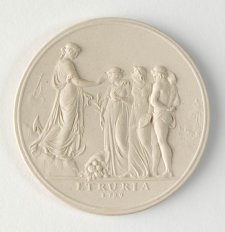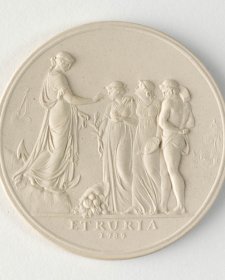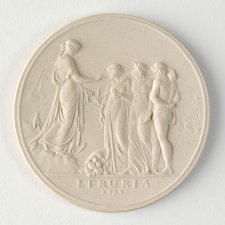Sir Joseph Banks KGB (1743–1820) was the powerful President of London’s Royal Society for more than forty years, from 1778 to 1820. Banks grew up on his father’s Lincolnshire estate and sharpened his interest in botany at Eton and Oxford. At the age of twenty-five, he suggested to the council of the Royal Society that they recommend him for inclusion on the voyage of the Endeavour, commanded by James Cook. On the three-year trip, he and Daniel Solander collected hundreds of specimens of plants and animals of the South Seas. For the rest of his life Banks was one of the sparkling stars of Enlightenment London. It was he who endorsed New South Wales as a site for a penal settlement; he was a patron of Matthew Flinders and others; and he corresponded zestfully with all the early governors of New South Wales. From 1788 to about 1810, though Banks held no official post (there was no ‘master plan’ for the settlement of the Colony, nor Department to administer it) he was a continuous advocate for the colony and his role as effective head of Australian affairs was widely acknowledged. Late in life, Banks’s chief interests were the development of superior sheep varieties and the drainage of the Lincolnshire fens to create pasture. It is largely down to Banks’s personal enthusiasm for merino sheep that specimens of the breed were established in Australia within a couple of decades of English settlement. John Macarthur was able to purchase seven rams and three ewes at the first public auction of merinos, supervised by Banks, near the Pagoda at Kew Gardens on 15 August 1804. Six of the beasts survived to land at Sydney on 7 July 1805. As a result, in years to come, England’s irksome dependence on European wool would be eased.
Thomas Phillips (1770–1845) painted Banks several times, and duplicated more than one of his own portraits of the great man. In this one, Banks sits with fen drainage plans to hand, wearing the uniform of the Lincolnshire Supplemental Militia, set off with the insignia of the Red Ribbon of the Order of the Bath which was awarded to him by his friend and fellow sheep enthusiast, King George III (‘Farmer George’) in 1795.
Purchased 2011
This oil on canvas portrait of celebrated explorer and botanist, Joseph Banks, measures 104.4cm tall by 93.2cm wide.
Seated with his body fully occupying the centre foreground and lower left of the image, Sir Joseph Banks faces towards the viewer though his gaze travels out, beyond the right of the frame. In a navy, gold and red navel jacket, an 8-pointed silver star at his breast, he holds a paper map, his powdered hair and fleshy face in a closed, thoughtful expression.
His skin stands out against the portrait’s mud-brown background. On the right, repurposed wooden planks are lined up vertically, perhaps a door or a window.
Bank’s short, coarse, grey hair is flecked with brown and tufts upward, in an even,
woollen-soft, textured frame around his face. A distinct hair line arcs across his forehead, slightly up and around the right side of his pale face, ending at the lobe of his large, right ear. Underneath thick eyebrows; textured like his hair, his blue eyes stare.
Banks’ nose is long and straight. His upper lip purses inside a fuller, lower lip. His slightly dimpled, full chin and the folds of his neck are cradled by two, layered, open high collars, each with two, gold buttons. They reveal a snug-fitting white, collared undershirt.
The rest of his white shirt is covered by a long, cream waistcoat. The high collar of his Naval jacket is red, thick and felted, a horizontal band of embroidered gold tapering to the collar’s upturned, front edge.
Down Banks’s front, two of the 10 buttons of his jacket hold the fabric together at his chest, it splits wide at his front, allowing for the spread of his middle.
Each large, circular, jacket button marks the end of a embroidered, gold, horizontal band of embellishment. These descend uniformly from the red collar down the length of the navy , red and gold jacket, a contrast to the cream, white and earthy tones of his waistcoat, shirt and surrounds. A large, decorative, 8-pointed silver star rests on the left breast of his jacket. This star and a strip of pale, red sash peeking out near his collar, signify Banks membership within the prestigious Order of Bath.
His leans his elbow on a wooden desk, three matching gold bands precede a red and gold cuff. Under his elbow other papers curl off, and to the right of the image.
In his left hand he holds a sheet of paper with pale blue markings, like that of a map. The surface of the paper reveals a play of light; bright from the top and fading to a dull, soft shadow at the lower edge of the frame.
Audio description written by Meredith Hughes and voiced by Rory Walker



On one level The Companion talks about the most famous and frontline Australians, but on another it tells us about ourselves.



Sharon Peoples contemplates costumes and the construction of identity.



1 January 2015
In recent years I have become fascinated by the so-called Sydney Cove Medallion (1789), a work of art that bridges the 10,000-mile gap between the newly established penal settlement at Port Jackson and the beating heart of Enlightenment England.